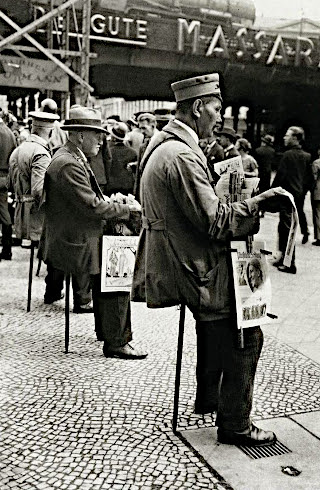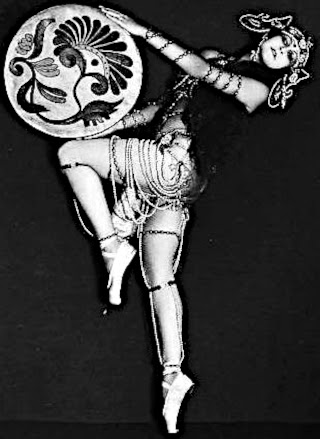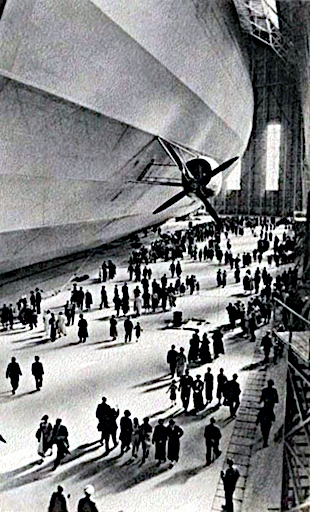 Ranchers are culling the herds as corn prices soar and wholesale prices for beef and milk drop.
Ranchers are culling the herds as corn prices soar and wholesale prices for beef and milk drop.
My personal view is that this is a manifestation of economic distortions and malinvestment due to government interferience in a variety of feed markets over a number of years, as well as paper speculation driving prices in a way that is not connected with physical supply and demand.
Is there a significant change in American dietary habits and an oversupply of beef and milk? It does not seem as though the retail prices of milk and beef are dropping in concert with this, which may be dampening demand.
Let them eat iPads and CDO's.
BusinessWeek
U.S. Cattle Herd Falls to 1958 Low as Losses Climb, Survey Says
By Whitney McFerron
Jan. 27 (Bloomberg) -- The U.S. cattle herd may have shrunk to the smallest size since 1958, as mounting losses during the recession spurred beef and dairy producers to cull animals, analysts said.
Wholesale choice-beef prices averaged $1.4071 a pound last year, the lowest level since at least 2004, as U.S. job losses climbed and meat demand waned. Corn, the main ingredient in livestock feed, jumped to a record $7.9925 a bushel in 2008 on the Chicago Board of Trade, and prices averaged about $3.79 last year, the third-highest annual average since at least 1959.
“There’s not much incentive to be building herds,” said John Nalivka, the president of Sterling Marketing Inc., a livestock-industry consulting company in Vale, Oregon. “Costs of production across the cow-calf sector and in dairy have gone up in the past two years, and prices have come down” for beef and milk, he said.
Futures prices for feeder cattle, the young animals that ranchers sell to feedlots to be fattened for slaughter, averaged 96.821 cents a pound last year on the Chicago Mercantile Exchange, the lowest level since 2003. Feeder-cattle futures for March settlement rose 0.2 percent yesterday to 98.975 cents a pound on the CME.
Slaughter-ready cattle futures for April delivery dropped 0.9 percent yesterday to 89.325 cents a pound.
Rancher Losses
Cattle ranchers in the southern Great Plains lost about $34 on every breeding cow they owned last year, following losses of about $18 a head in 2008, according to Jim Robb, the director of the Denver-based Livestock Marketing Information Center, an industry- and government-funded researcher.
U.S. beef production may total 25.45 billion pounds (11.54 million metric tons) in 2010, which would be the smallest amount since 2005, Robb said. The USDA forecasts output at 25.58 billion pounds.
“We’re forecasting that beef production in 2010 won’t be the smallest since 1958, because the average animal processed now weighs twice as much,” Robb said.
The number of young female beef cattle held back for breeding in the U.S. may have fallen to 5.45 million animals, down 1.4 percent from 5.526 million a year earlier, according to the average analyst estimate.
Dairy Cuts
Dairy farmers may be holding back 4.313 million young replacement cows for breeding, down 2.2 percent from 4.41 million at the same time last year, according to the average analyst estimate. The dairy herd is shrinking partly because of industry-funded cow culls last year aimed at supporting prices.
The so-called Cooperatives Working Together program removed about 252,000 dairy cows from production since December 2008, according to a statement on the group’s Web site.
“Last year was a terrible year for milk prices,” said Ron Plain, a livestock economist at the University of Missouri in Columbia. He said the industry-funded culling program is “one of the reasons why we’re down so much on milk-cow numbers from a year ago.”
The price of class III milk, used to make cheese, tumbled to a six-year low last year of $9.24 per 100 pounds, after global demand slowed. The price has rebounded 57 percent since then to $14.54 yesterday on the CME.
27 January 2010
US Cattle Herd Drops to 1958 Levels
A Tale of Two Economies and The Myth of Recovery: Thoughts Before the State of the Union Address
 Economist Michel Hudson frames the current situation with the US national economy in his most recent essay, The Myth of Recovery, in a way that is strikingly different from the conventional view.
Economist Michel Hudson frames the current situation with the US national economy in his most recent essay, The Myth of Recovery, in a way that is strikingly different from the conventional view.
Sometimes we become locked into a model of thinking that leads us to engage in repeated errors, because of a flaw in the model, and not in the actual detailed decisions that lead us to those errors.
I think it is worth reading, and herein is a protracted excerpt from it. It cuts to the heart of what we have said, that there will be no sustained recovery until the real wage increases. The outsized financial sector is strangling the real recovery by diverting resources to itself, and taxing whatever is provided to the real economy.
Mike Hudson takes a more Keynesian approach than I would because of his background and training. That is a legitimate difference. My personal approach would begin with a reform and reshaping of the financial system first and foremost, and a recognition that the current structure of global trade is a game that is rigged against the American working class.
There are two economies – and the extractive FIRE sector dominates the “real” economy
When listening to the State of the Union speech, one should ask just which economy Obama means when he talks about recovery. Most wage earners and taxpayers will think of the “real” economy of production and consumption. But Obama believes that this “Economy #1” is dependent on that of Wall Street. His major campaign contributors and “wealth creators” in the FIRE sector – Economy #2, wrapped around the “real” Economy #1.
Economy #2 is the “balance sheet” economy of property and debt. The wealthiest 10 per cent lend out their savings to become debts owed by the bottom 90 per cent. A rising share of gains are made in extractive ways, by charging rent and interest, by financial speculation (“capital gains”), and by shifting taxes off itself onto the “real” Economy #1.
John Edwards talked about “the two economies,” but never explained what he meant operationally. Back in the 1960s when Michael Harrington wrote The Other America, the term meant affluent vs. poor America. For 19th-century novelists such as Charles Dickens and Benjamin Disraeli, it referred to property owners vs. renters. Today, it is finance vs. debtors. Any discussion of economic polarization between rich and poor must focus on the deepening indebtedness of most families, companies, real estate, cities and states to an emerging financial oligarchy.
Financial oligarchy is antithetical to democracy. That is what the political fight in Washington is all about today. The Corporate Democrats are trying to get democratically elected to bring about oligarchy. I hope that this is a political oxymoron, but I worry about how many people buy into the idea that “wealth creation” requires debt creation. While wealth gushes upward through the Wall Street financial siphon, trickle-down economic ideology fuels a Bubble Economy via debt-leveraged asset-price inflation.
The role of public spending – and hence budget deficits – no longer means taxing citizens to spend on improving their well-being within Economy #1. Since the 2008 financial meltdown the enormous rise in national debt has resulted from the reimbursing of Wall Street for its bad gambles on derivatives, collateralized debt obligations and credit default swaps that had little to do with the “real” economy. They could have been wiped out without bringing down the economy. That was an idle threat. A.I.G.’s swap insurance department could have collapsed (it was largely in London anyway) while keeping its normal insurance activities unscathed. But the government paid off the financial sector’s bad speculative debts by taking them onto the public balance sheet.
The economy is best viewed as the FIRE sector wrapped around the production and consumption core, extracting financial and rent charges that are not technologically or economically necessary costs.
Say’s Law of markets, taught to every economics student, states that workers and their employers use their wages and profits to buy what they produce (consumer goods and capital goods). Profits are earned by employing labor to produce goods and services to sell at a markup. (M – C – M’ to the initiated.)
The financial and property sector is wrapped around this core, siphoning off revenue from this circular flow. This FIRE sector is extractive. Its revenue takes the form of what classical economists called “economic rent,” a broad category that includes interest, monopoly super-profits (price gouging) and land rent, as well as “capital” gains. (These are mainly land-price gains and stock-market gains, not gains from industrial capital as such.) Economic rent and capital gains are income without a corresponding necessary cost of production (M – M’ to the initiated).
Banks have lent increasingly to buy up these rentier rights to extract interest, and less and less to promote industrial capital formation. Wealth creation” FIRE-style consists most easily of privatizing the public domain and erecting tollbooths to charge access fees for basic necessities such as health insurance, land sites, home ownership, the communication spectrum (cable and phone rights), patent medicine, water and electricity, and other public utilities, including the use of convenient money (credit cards), or the credit needed to get by. This kind of wealth is not what Adam Smith described in The Wealth of Nations. It is a form of overhead, not a means of production. The revenue it extracts is a zero-sum economic activity, meaning that one party’s gain (that of Wall Street usually) is another’s loss.
Debt deflation resulting from a distorted “financialized” economy
The problem that Obama faces is one that he cannot voice politically without offending his political constituency. The Bubble Economy has left families, companies, real estate and government so heavily indebted that they must use current income to pay banks and bondholders. The U.S. economy is in a debt deflation. The debt service they pay is not available for spending on goods and services. This is why sales are falling, shops are closing down and employment continues to be cut back.
Banks evidently do not believe that the debt problem can be solved. That is why they have taken the $13 trillion in bailout money and run – paying it out in bonuses, or buying other banks and foreign affiliates. They see the domestic economy as being all loaned up. The game is over. Why would they make yet more loans against real estate already in negative equity, with mortgage debt in excess of the market price that can be recovered? Banks are not writing more “equity lines of credit” against homes or making second mortgages in today’s market, so consumers cannot use rising mortgage debt to fuel their spending.
Banks also are cutting back their credit card limits. They are “earning their way out of debt,” making up for the bad gambles they have taken with depositor funds, by raising interest rates, penalties and fees, by borrowing low-interest credit from the Federal Reserve and investing it abroad – preferably in currencies rising against the dollar. This is what Japan did in the “carry trade.” It kept the yen’s exchange rate down, and it is lowering the dollar’s exchange rate today. This threatens to raise prices for imports, on which domestic consumer prices are based. So easy credit for Wall Street means a cost squeeze for consumers.
The President needs a better set of advisors. But Wall Street has obtained veto power over just who they should be. Control over the President’s ear time has been part of the financial sector’s takeover of government. Wall Street has threatened that the stock market will plunge if oligarch-friendly Fed Chairman Bernanke is not reappointed. Obama insists on keeping him on board, in the belief that what’s good for Wall Street is good for the economy at large.
But what’s good for the banks is a larger market for their credit – more debt for the families and companies that are their customers, higher fees and penalties, no truth-in-lending laws, harsher bankruptcy terms, and further deregulation and bailouts.
This is the program that Bernanke has advised Washington to follow. Wall Street hopes that he will be kept on board. Bernanke’s advice has helped bolster that of Tim Geithner at Treasury and Larry Summers as chief advisor to convince Pres. Obama that “recovery” requires more credit.
Going down this road will make the debt overhead heavier, raising the cost of living and doing business. So we must beware of the President using the term “recovery” in his State of the Union speech to mean a recovery of debt and giving more money to Wall Street Jobs cannot revive without consumers having more to spend. And consumer demand (a hateful, jargon word, because only Wall Street and the Pentagon’s military-industrial complex really make demands) cannot be revived without reducing the debt burden. Bankers are refusing to write down mortgages and other debts to reflect the ability to pay. That act of economic realism would mean taking a loss on their bad debts. So they have asked the government to lend new buyers enough credit to re-inflate housing prices. This is the aim of the housing subsidy to new homebuyers. It leaves more revenue to be capitalized into higher mortgage loans to support prices for real estate fallen into negative equity.
The pretense is that this is subsidizing the middle class, but homebuyers are only the intermediaries for government credit (debt to be paid off by taxpayers) to mortgage bankers. Nearly 90 per cent of new home mortgages are being funded or guaranteed by the FHA, Fannie Mae and Freddie Mac – all providing a concealed subsidy to Wall Street.
Obama’s most dangerous belief is in the myth that the economy needs the financial sector to lead its recovery by providing credit. Every economy needs a means of payment, which is why Wall Street has been able to threaten to wreck the economy if the government does not give in to its demands. But the monetary function should not be confused with predatory lending and casino gambling, not to mention Wall Street’s use of bailout funds on lobbying efforts to spread its gospel.
Deficit reduction
It seems absurd for politicians to worry that running a deficit from health care or Social Security can cause serious economic problems, after having given away $13 trillion to Wall Street and a blank check to the Pentagon. The “stimulus package” was only about 5 per cent of this amount. But Obama has announced that he intends on Tuesday to close the barn door by proposing a bipartisan Senate Budget Commission to recommend how to limit future deficits – now that Congress is unwilling to give away any more money to Wall Street.
Republican approval would set the stage for Wednesday’s State of the Union message promising to press for “fiscal responsibility,” as if a lower deficit will help recovery. I suspect that Republicans will have little interest in joining. They see the aim as being to co-opt their criticism of Democratic spending plans. But in view of the rising and well-subsidized efforts of Harold Ford and his fellow Corporate Democrats, the actual “bipartisan” aim seems to be to provide political cover for cutting spending on labor and on social services. Obama already has sent up trial balloons about needing to address the Social Security and Medicare deficits, as if they should not be financed out of the general budget by taxpayers including the higher brackets (presently exempted from FICA paycheck withholding).
Traditionally, running deficits is supposed to help pull economies out of recession. But today, spending money on public services is deemed “bad,” because it may be “inflationary” – that is, threatening to raise wages. Talk of cutting deficits thus is class-war talk – on behalf of the FIRE sector.
The economy needs deficit spending to avoid unemployment and poverty, to increase social spending to deal with the present economic shrinkage, and to maintain their capital infrastructure. The federal government also needs to increase revenue sharing with states forced to slash their budgets in response to falling tax revenue and rising unemployment insurance.
But the deficits that the Bush-Obama administration have run are nothing like the familiar old Keynesian-style deficits to help the economy recover. Running up public debt to pay Wall Street in the hope that much of this credit will be lent out to inflate asset prices is deemed good. This belief will form the context for Wednesday’s State of the Union speech. So we are brought back to the idea of economic recovery and just what is to be recovered.
Financial lobbyists are hoping to get the government to fill the gap in domestic demand below full-employment levels by providing bank credit. When governments spend money to help increase economic activity, this does not help the banks sell more interest bearing debt. Wall Street’s golden age occurred under Bill Clinton, whose budget surplus was more than offset by an explosion of commercial bank lending.
The pro-financial mass media reiterate that deficits are inflationary and bankrupt economies. The reality is that Keynesian-style deficits raise wage levels relative to the price of property (the cost of obtaining housing, and of buying stocks and bonds to yield a retirement income). The aim of running a “Wall Street deficit” is just the reverse: It is to re-inflate property prices relative to wages.
A generation of financial “ideological engineering” has told people to welcome asset-price inflation (the Bubble Economy). People became accustomed to imagine that they were getting richer when the price of their homes rose. The problem is that real estate is worth what banks will lend – and mortgage loans are a form of debt, which needs to be repaid.
The Bernanke Deception and the Stirring of American Populism

It is interesting also to hear the financial princes growling from lofty Davos about 'Obama's outburst' regarding the Volcker Rule and the impertinence of the Americans in daring to set national regulations for their banks.
Is this an historic moment? Are the people challenging the rule of a burgeoning financial elite, which is puzzled at the sudden rebellion against their enlightened rule?
I think that the answer might be yes, and this is what Ron Paul alluded to in his video regarding 'revolutionary changes.'
And one can only marvel at the way in which the Democrats are committing political suicide after being handed the reins of power with an overwhelming majority, out of what appears to be sheer, almost incomprehensible arrogance and fundamental incompetence. Watching the toad Geithner testify is painful beyond expression.
Will the Americans lead the storming of the Banking Bastille? And will the cowed Brits dare to defy their ubiquitous surveillance cameras and raise their voices for change?
Surely a politician's worst nightmare, a crisis gone wrong. This is the point at which the people ought to be laying down their liberty for the security of a return to credit lending, and a banking system that defers from crashing their markets.
I also have to wonder how the politicians forget the lessons of the past, and the downfall of once mighty leaders of popular governments. It is never about the first offence, the original act itself which may seem trivial.
What brings down governments is the cover up, the conflicts of interest, the pettiness of tone deaf arrogance, and the ensuing loss of confidence.
Fed Deception of Congress Regarding AIG
"Even as the Senate prepares to vote on the Bernanke nomination, Rep. Darrell Issa (R-CA) has asked the Chairman of the House Committee on Oversight and Government Reform to subpoena AIG-related documents from the Fed, documents which apparently prove that Chairman Bernanke played a major role in deciding to bail out AIG and, indirectly, Goldman Sachs (GS) and other large bank dealers.
In a January 26, 2010 letter obtained by The IRA, Issa claims that Bernanke overruled a recommendation by Fed staff that AIG be allowed to declare bankruptcy "just like Lehman Brothers" and instead authorized the bailout of the crippled insurance giant over the objections of Fed staff in Washington. The Fed appears to be withholding these documents from Congress until after the Senate votes on the Bernanke nomination.
Rep. Issa, the ranking member of the Committee, refers to a statement by Senator Jim Bunning (R-KY), whose staff has been examining these same documents under strict rules of confidentiality imposed by the Fed's staff, to the effect that Chairman Bernanke overruled the recommendation of his staff and pushed the bailout of AIG. How can the Senate vote on the Bernanke nomination when the Fed is refusing to comde clean on AIG?
Members of the Senate need to ask themselves a question: With the current disclosure by the Fed, what further revelations will surface regarding the central bank, AIG and the bailout of the large New York banks between now and November?
So given the above, why is Chairman Bernanke seemingly en route to confirmation? Why do members of the Senate seem to indifferent to the mounting popular anger at Chairman Bernanke and the Fed? There are several reasons the Senate is making a major political and economic miscalculation in its appraisal of Ben Bernanke's role at the Federal Reserve. The most significant is that Senators think that the Federal Reserve and the bailouts are not voting issues, because there are no traditional organized constituent groups that lobby around them.
Staffers who frame issues for Senators do not know that Fed and its profile in American politics has changed in a way reminiscent of the days of President Jackson and the battle over the Second Bank of the United States. After all, issue groups have an incentive to mislead incumbent Senators in a way biased towards the interest of incumbent financial interests. This is a terrible mistake for the political health of any Senator who wants to get reelected in 2010 or 2012. The bailouts happened from 2008-2009, and voters now understand them and loath them. And this applies equally to Democrats and Republicans in the Senate.
Look at how the Fed and AIG are changing the dynamic for incumbent GOP Senators. Republicans are seeing bailout-themed primary campaigns, where incumbents like Utah Senator Bob Bennett and Arizona Senator John McCain are explicitly attached to the bailouts. As noted above, democrats saw losses in Virginia, New Jersey, and Massachusetts. And Brown voters in Massachusetts showed significant dissatisfaction with Democratic ties to Wall Street. But the same populist wave will carry away Republicans as well.
Bottom line: A "yes" vote for Chairman Bernanke raises the likelihood of defeat for every member of the Senate standing for election in 2010 and 2012. And in any event, the rising tide of popular unhappiness with Washington and Wall Street promises to remake the American political landscape in a way not seen in the post WW II era. The comfortable assumption of stability in American political life is about to be replaced by instability and change, but that is what democracy is all about."
Political Risk: The Bernanke Nomination and the Return of American Populism - Institutional Risk Analyst
The Economic Recovery: Banks and Bullets
The consumer and the organic economy are flat on their back.
The US recovery is centered on the financial bailouts and military spending.
Military Keynesianism, aka the Military-Industrial Complex






























